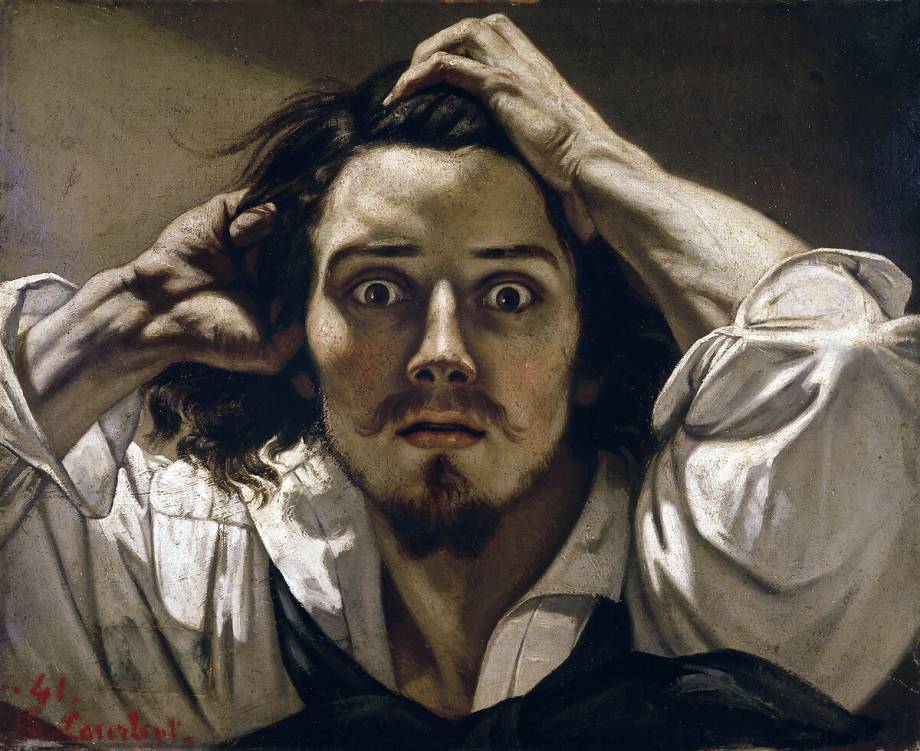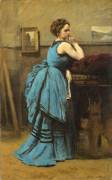Shop art print and framed art The Desperate Man by Gustave Courbet
Customise
Your art print
The Desperate Man OF Gustave Courbet
The Desperate Man
Gustave Courbet's Le Désespéré: an iconic work of realism
The work Le Désespéré is one of the most famous paintings by the French painter Gustave Courbet. The painting, often considered a self-portrait, is a compelling example of the realist movement of which Courbet was a leading exponent.
Technical and aesthetic characteristics
The painting depicts a man with intense eyes and messy hair, appearing to be in a state of deep distress. The wide eyes and half-open mouth help to give an impression of raw reality, typical of Courbet's realist style. This is probably a self-portrait by the artist, although this has never been formally confirmed.
Run around 1843-1845, this oil painting on canvas measures 45 x 37.5 cm and is currently housed at the Musée d'Orsay in Paris.
Colours and contrasts
The dark colours and the strong contrasts reinforce the feeling of anguish and torment that emanates from the painting. The man's face is illuminated by light coming from the upper left, creating pronounced shadows on the rest of the composition.
The painting technique
Courbet uses a pictorial technique characteristic of the realist movement: he paints with vigour and impasto, superimposing layers of paint to give relief to the painting. The strokes are rapid and expressive, helping to accentuate the emotion felt when looking at this work.
Historical and symbolic context
Le Désespéré took place during a period of great artistic and social effervescence in France. Courbet, an emblematic figure of the realist movement, sought to depict reality as it was, without idealisation or romanticism. The political and social context of the time, marked in particular by the revolutions of 1848 and democratic aspirations, undoubtedly influenced this artistic choice.
The realist movement
The realism is an artistic movement that emerged in the mid-19th century in response to the excesses of Romanticism. It is characterised by a truthful and objective representation of reality, without make-up or embellishment. For realist painters such as Courbet, it was essential to denounce social injustice and show life as it was, in all its rawness.
The symbolism of despair
In Le Désespéré, the man's dramatic expression can be interpreted as a reaction to the human condition and the suffering inherent in life. This work could also symbolise the torments of the artist himself, confronted with a society that does not always understand his artistic approach and ideological aspirations.
Influence and posterity of Le Désespéré
Gustave Courbet's painting marked its era and continues to be a source of inspiration for many contemporary artists. Its influence can be seen in works such as:
- The Origin of the World, also by Gustave Courbet, which depicts the female sex with a crudity never before seen in painting.
- The Ambassadors of Misery, a series of photographs by Martin Parr showing Western tourists in front of historical sites or natural landscapes, in a striking contrast between opulence and poverty.
- La Vie moderne, a documentary film by Raymond Depardon exploring the difficulty of rural life in present-day France.
Today, Gustave Courbet's Le Désespéré remains an iconic work of the realist movement and a striking example of art's ability to express the most intense human emotions.
This artwork is a painting from the classical period. It belongs to the realism style.
« The Desperate Man » is kept at Private Collection.
Find the full description of The Desperate Man by Gustave Courbet on Wikipedia.



































